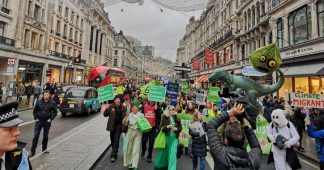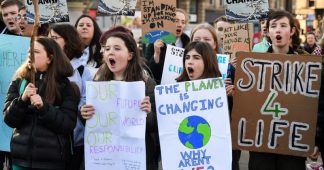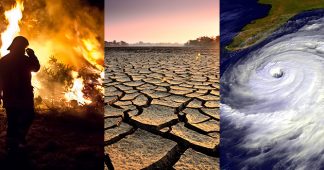14 March 2019
Hundreds of thousands of students and young people are expected to take part this Friday in a worldwide Youth Climate Strike to protest the inaction of governments on the issue of climate change. That the international demonstration has evoked a broad response is an indication of both the serious nature of the ecological crisis and the radicalization of youth all over the world.
The strike is the culmination of a series of international protests that began last August after 15-year-old Greta Thunberg began picketing the Swedish parliament every Friday. Since then, students and youth, some as young as 12, have organized weekly walk outs, protests and strikes in many parts of the world. Friday’s demonstrations, which will be the largest to date, will take place in more than 1,200 cities in at least 92 countries across six continents—including in Australia, Brazil, China, Great Britain, India, Iran, Italy, the Philippines, Portugal, Russia, Somalia, Sweden and the United States.
The protests have expanded amidst a series of reports indicating that global warming is accelerating, and that the destruction already caused by climate change from hurricanes, heat waves, droughts and other extreme weather events will become qualitatively more catastrophic as early as 2040. The Intergovernmental Panel on Climate Change has warned that the measures taken by governments to halt global warming are so much empty bluster. It estimates the potential economic damage from unabated climate change to be between $54 and $69 trillion worldwide.
Perhaps the most tragic consequence of global warming is the creation of so-called “climate refugees,” those forced to permanently flee their homes as a result of climate change-related disasters. The United Nations estimates that 210 million people worldwide have been displaced since 2008, and that up to one billion will be displaced by 2050.
The student strikes reflect the politicization and left-ward trajectory of a generation that has come of age in a world of unprecedented social inequality, ongoing environmental degradation, growing state repression and expanding imperialist wars.
Polls consistently show a left-ward movement of young people and growing support for and interest in socialism. Central to the perspective of genuine socialism is the understanding that there is not a single social problem confronting humanity—from climate change, to poverty and unemployment, to authoritarianism and war—that can be resolved except through the political mobilization of the international working class in a revolutionary movement to overturn capitalism and establish a society based on social need, not private profit.
The objective basis for such a revolutionary movement is beginning to emerge in the growth of the class struggle internationally, beginning in 2018 and escalating this year.
Mass protests and strikes in the past several weeks have paralyzed the Algerian government. Protests in Belgium, France, Germany, Portugal and Sudan have erupted against pro-business austerity and the victimization of refugees. Workers in different parts of Iran have been regularly striking for 15 months. Tens of thousands of autoworkers in Mexico have been on strike since January, and tens of thousands of teachers in the United States have gone on strike this year, in conflict with the pro-company unions. Students themselves are joining in these struggles, particularly in support of teachers and to defend public education.
It is to the working class that young people must turn, not to the corporate politicians and government institutions. Young people must study politics and come to an understanding of the role played by organizations that claim to be “left” or “green,” but work to channel opposition behind the ruling class and its policies of war and austerity.
excerpt of The Youth Climate Strike and the fight against global warming











